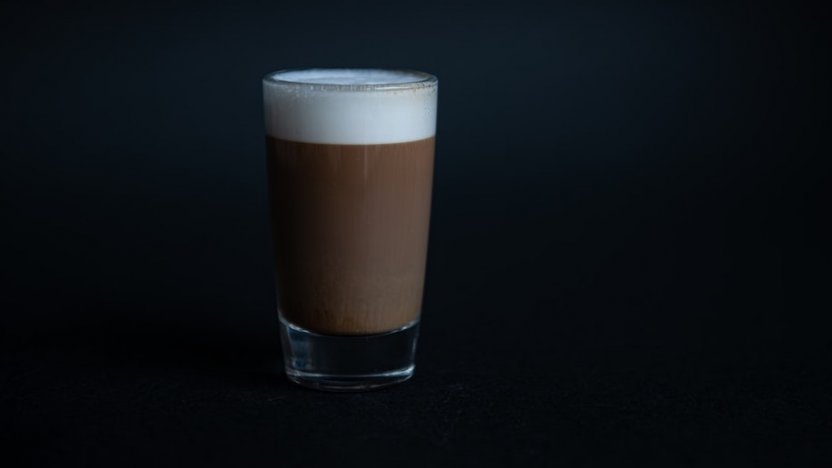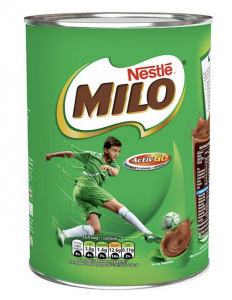Lookalike branding and risk of confusion

Similarities in packaging between Howler’s stout beer and Nestlé’s MILO® chocolate milk hit the courts in Australia last month, with the case illustrating the need for trademark protection of visual branding elements, says Chantal Koller.
As seen with the high-profile dispute between oat-based milk brands OATLY and Glebe Farm, establishing risk of confusion under trademark law hinges on certain distinct legal elements. Obtaining trademark protection for important brand elements is highly advisable, therefore. Such rights help companies to protect their brand assets and can also help to safeguard consumers’ health, as illustrated by a recent dispute in Australia between Nestlé (MILO® chocolate milk) and Howler (stout beer) over lookalike packaging.
Packaging design and risk of confusion
 In Australia, Nestlé commercialises its powdered chocolate drink MILO® in a green container (pictured right), with the brand name in brown letters on a white background in the shape of a cloud with golden rims and the company name written in its iconic red stylised version.
In Australia, Nestlé commercialises its powdered chocolate drink MILO® in a green container (pictured right), with the brand name in brown letters on a white background in the shape of a cloud with golden rims and the company name written in its iconic red stylised version.
 Thinking it was reaching for the ready-to-drink chocolate milk, a toddler finding a Howler stout can (see left) in the family fridge opened it and started to drink the beer. Horrified when they saw what was happening, his parents filed a complaint based on the Alcohol Beverages Advertising Code to the Victorian Commission for Gambling and Liquor Regulation, which ordered the small Australian brewery to stop advertising the branding of the stout and to swiftly change its packaging.
Thinking it was reaching for the ready-to-drink chocolate milk, a toddler finding a Howler stout can (see left) in the family fridge opened it and started to drink the beer. Horrified when they saw what was happening, his parents filed a complaint based on the Alcohol Beverages Advertising Code to the Victorian Commission for Gambling and Liquor Regulation, which ordered the small Australian brewery to stop advertising the branding of the stout and to swiftly change its packaging.
While the matter was mainly reported in the news based on consumer rights and health issues, the story does not tell whether Nestlé filed any complaint as to the infringement of its IP rights. From an IP perspective, here are a few thoughts.
Establishing trademark confusion
As outlined in the OATLY article, the elements of trademark confusion are whether the name and/or logos used on the infringing product are creating an overall similarity sufficient to mislead consumers as to the origin of the goods. In the present case, while those above 18 years old may perceive the differences in the names written both in red and brown letters, minors were considered to be at serious risk of confusion. In addition to the real risk of confusion over the products themselves, the legal risk of confusion in this case is extreme:
- Identical colour codes
- Identical layout of branding elements
- Identical shapes and font stylisations
All branding elements of Nestlé’s packaging were used on the stout can. Depending on the brand elements protected by Nestlé on each individual element, a trademark infringement court claim would have obvious chances to succeed based solely on trademark law. But other elements of unfair competition law would also apply in this case, as it is obvious that the use of Nestlé’s branding was intentionally copied by Howler. Such an intention (called ‘bad faith’ in legal terms) is an additional element of unlawful behaviour that could not only justify a civil claim but also criminal charges depending on the regulations in place locally.
The difference between branding and generic terms
Contrarily to the oat-milk conflict between OATLY and Glebe Farm, this case shows that IP and unfair competition provisions are here to protect companies and consumers from confusing products not because their content, concept or recipe is similar, but because their marketing elements are creating confusion. While copying a generic term, such as ‘oat milk’ on a different packaging is not – in our view – trademark infringement, copying all branding elements of another product presents a serious infringement matter that should not be tolerated, both for protection of consumers’ health and for a company’s assets.
What should companies do? Clearly, it is advisable to protect the branding elements present on packaging as trademarks. But, while a company like Nestlé may have the structure, strategy and finances necessary to register several trademarks to protect packaging, SMEs and start-ups may not have access to the same resources. Discussing your branding strategy with an IP lawyer provides the opportunity to determine which branding elements are key and how to best protect them as trademarks.
To find out more, please speak to your Novagraaf attorney or contact us below.
Chantal Koller is Managing Director – Trademarks at Novagraaf in Switzerland.